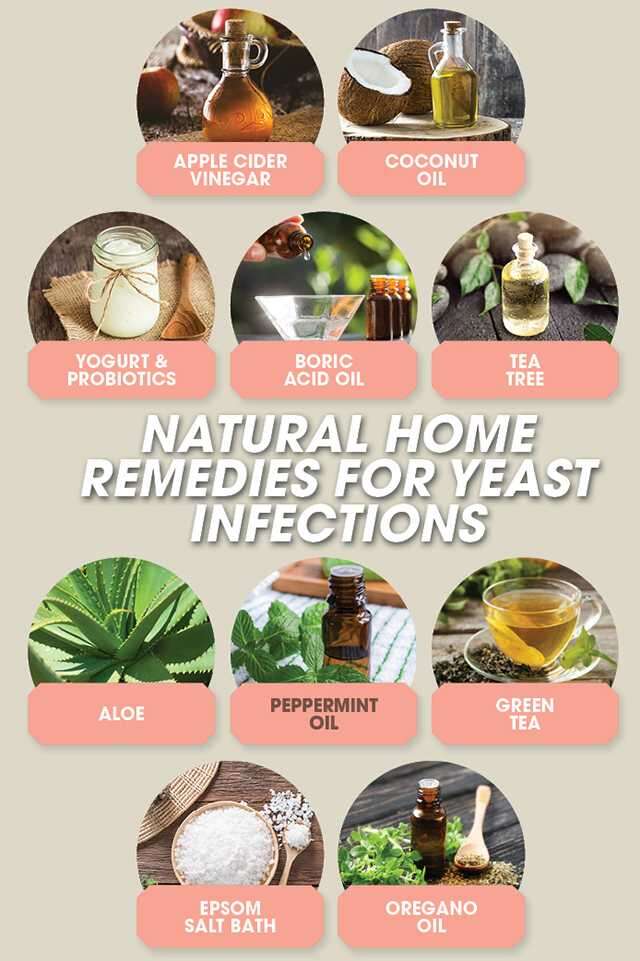Discover the top secret remedies for yeast infections that will have you feeling fresh and vibrant in no time!
Table of Contents
- Introduction to Yeast Infections
- Common Causes of Yeast Infections
- Home Remedies: Can They Help?
- When to See a Doctor
- Medical Treatment Options
- Lifestyle Changes for Prevention
- Misconceptions About Yeast Infections
- Sore Throat & Acid Reflux: Are They Related?
- Understanding UTIs vs. Yeast Infections
- Summary & Reminders
- FAQs
Introduction to Yeast Infections
Have you ever heard of a yeast infection? It’s not like the bread or cakes that need yeast to rise. In our bodies, yeast infections can cause some trouble in places like our skin, mouth, and even down there.
When we talk about a yeast infection, we’re actually talking about a type of fungus that likes to grow in warm, moist areas of our bodies. It’s like when mold starts to grow on old bread – yuck!
Yeast infections can make us feel itchy, uncomfortable, and sometimes a little sore. But don’t worry, we can find ways to help when a yeast infection shows up in our bodies.
Itchy Troubles
One of the first signs that you might have a yeast infection is feeling itchy in the affected area. If you find yourself constantly wanting to scratch, especially around the genitals, it could be a clue that a yeast infection is present.
Unusual Discharge
Another symptom of a yeast infection is changes in discharge. Normally, discharge is clear or slightly white, but with a yeast infection, it might become thicker, clumpier, and have a cottage cheese-like appearance. Keep an eye out for these differences!
Common Causes of Yeast Infections
Yeast infections are caused by an overgrowth of the fungus Candida albicans, which naturally lives in our bodies. When the balance of bacteria and yeast in your vagina is disrupted, it can lead to a yeast infection. Here are some common causes:
1. Hormonal Changes
Fluctuations in hormone levels, such as those that occur during pregnancy, menstruation, or menopause, can create an environment conducive to yeast overgrowth.
2. Antibiotic Use
Antibiotics can kill off the good bacteria in your body that help keep yeast in check. Without these beneficial bacteria, yeast can multiply and cause an infection.
3. Uncontrolled Diabetes
High blood sugar levels in individuals with diabetes provide an ideal environment for yeast to thrive. Keeping blood sugar under control is crucial for preventing yeast infections.
4. Weak Immune System
If your immune system is compromised due to factors like stress, illness, or certain medical conditions, it may be less effective in fighting off yeast overgrowth.
5. Tight Clothing
Wearing tight-fitting clothes, especially synthetic materials that don’t allow your skin to breathe, can create a warm and moist environment perfect for yeast to grow.
By understanding these common causes of yeast infections, you can take steps to reduce your risk of experiencing this uncomfortable condition.
Home Remedies: Can They Help?
When facing a yeast infection, exploring home remedies may seem like a natural option. Let’s take a closer look at some common household fixes and how they can potentially alleviate this pesky problem.

Image courtesy of www.pinterest.com via Google Images
The Power of Yogurt
One popular home remedy for yeast infections is yogurt. Not just any yogurt, though; it must be plain, unsweetened, and contain live cultures. These probiotics can help restore the balance of good bacteria in your body, potentially combating the overgrowth of yeast that leads to infections.
Garlic: A Potent Solution?
Garlic is often hailed for its antifungal properties, making it a contender in the battle against yeast infections. Some people swear by inserting garlic cloves into the vagina overnight to help clear up the infection. However, it’s essential to proceed with caution and consult a healthcare provider before trying this method, as inserting garlic can cause irritation for some individuals.
When to See a Doctor
While yeast infections can often be treated effectively at home with over-the-counter remedies or natural solutions, there are instances where it is essential to seek medical advice from a healthcare provider. Here are the signs that indicate you should see a doctor:
Severe Symptoms:
If you notice that your yeast infection symptoms are severe, persistent, or worsening despite trying home remedies, it’s time to consult with a doctor. They can evaluate the situation and recommend a suitable treatment plan.
First-time Infection:
For individuals experiencing their first yeast infection or those unsure if their symptoms are due to a yeast infection, seeking medical advice is crucial. A healthcare provider can accurately diagnose the issue and provide appropriate care.
Frequent Recurrences:
If you find yourself dealing with recurrent yeast infections (four or more within a year), it’s advisable to see a doctor. They can investigate underlying causes and recommend strategies to prevent future occurrences.
Remember, your doctor is there to help you manage your health effectively, and seeking their guidance when needed is a proactive step towards overcoming yeast infections.
Medical Treatment Options
When home remedies and lifestyle changes are not sufficient to alleviate the symptoms of a yeast infection, medical intervention may be necessary. Healthcare providers offer a range of treatment options to help combat this common ailment.

Image courtesy of www.pinterest.com via Google Images
Prescription Medications
For severe or recurring yeast infections, doctors may prescribe antifungal medications to target the root cause of the infection. These medications come in various forms, such as oral tablets, creams, or suppositories. It’s essential to follow your healthcare provider’s instructions carefully to ensure the effective eradication of the yeast infection.
Over-the-Counter Solutions
In some cases, over-the-counter antifungal products can effectively treat mild yeast infections. These treatments are readily available at pharmacies and typically come in the form of creams, ointments, or vaginal suppositories. It’s essential to read and follow the instructions on the packaging to maximize the effectiveness of these products.
Lifestyle Changes for Prevention
Preventing yeast infections is possible with some simple lifestyle adjustments. By making a few changes in your daily habits, you can significantly reduce the risk of developing these pesky infections.
Dietary Adjustments
What you eat plays a crucial role in maintaining a healthy balance of bacteria and yeast in your body. To prevent yeast infections, it’s important to limit the consumption of sugary foods and refined carbohydrates. These can feed the yeast, causing it to multiply and lead to an infection. Instead, focus on eating a diet rich in fruits, vegetables, whole grains, and lean proteins to keep your gut flora in check.
Staying Dry and Clean
Keeping your genital area clean and dry is essential for preventing yeast infections. Moist environments create the perfect breeding ground for yeast, so make sure to change out of wet clothes promptly, especially after swimming or exercising. Opt for breathable cotton underwear and avoid using harsh soaps or douches that can disrupt the natural pH balance of your vagina. By practicing good hygiene habits, you can help ward off yeast infections.
| Treatment | Description | Effectiveness |
|---|---|---|
| Over-the-Counter Antifungal Creams | Commonly used to treat yeast infections, available at pharmacies without a prescription | Effective for mild yeast infections |
| Yogurt | Contains probiotics that can help restore the balance of yeast in the body | May provide relief for some individuals |
| Garlic | Has natural antifungal properties that may help fight yeast infections | Limited evidence on effectiveness |
| Probiotic Supplements | Helps restore the balance of bacteria in the body, potentially aiding in yeast infection treatment | Some studies suggest potential benefits |
| Apple Cider Vinegar | Believed to have antifungal properties that can help fight yeast infections | May provide relief for some individuals |
Misconceptions About Yeast Infections
There are many myths and misunderstandings circulating about yeast infections that can lead to confusion and unnecessary worry. Let’s take a closer look at some of the common misconceptions to set the record straight.

Image courtesy of www.pinterest.com via Google Images
Yeast Infection Myths
One common misconception is that only women can get yeast infections. While it’s true that yeast infections are more common in women, men can also get them. It’s essential for everyone to be aware of the symptoms and seek treatment if needed.
Another myth is that yeast infections are always caused by poor hygiene. While maintaining good hygiene practices is important for overall health, yeast infections can occur due to a variety of factors, including hormonal changes, weakened immune system, or certain medications.
Additionally, some people believe that yeast infections are always sexually transmitted. While yeast infections can be passed through sexual contact, they can also develop independently due to imbalances in the body’s natural flora. It’s essential to communicate openly with your partner and seek medical advice if you suspect a yeast infection.
In conclusion, it’s crucial to separate fact from fiction when it comes to yeast infections. Understanding the true causes and symptoms can help you seek the appropriate treatment and alleviate any unnecessary concerns.
Sore Throat & Acid Reflux: Are They Related?
When you have a sore throat, it can be quite uncomfortable. But did you know that there might be a connection between your sore throat and acid reflux?
The Link Between Acid Reflux and Sore Throat
Acid reflux happens when stomach acid flows back into your esophagus, causing a burning sensation. This acid can also travel up to your throat, leading to irritation and inflammation, which can result in a sore throat. So, if you’re experiencing frequent bouts of acid reflux, it might be contributing to that pesky sore throat.
Finding Relief for Both
If you’re dealing with both acid reflux and a sore throat, there are a few things you can do to find relief. Eating smaller meals, avoiding trigger foods like spicy or acidic items, and staying upright after eating can help reduce acid reflux symptoms. Gargling with warm salt water or drinking soothing tea can also provide some comfort for your sore throat. And remember to stay hydrated!
Understanding UTIs vs. Yeast Infections
When it comes to infections in the urinary system, there are often two common culprits – Urinary Tract Infections (UTIs) and Yeast Infections. While they may both cause discomfort, it’s crucial to understand that they are not the same. Let’s delve into the dissimilarities and similarities between these pesky infections.

Image courtesy of www.femina.in via Google Images
UTIs: The Unwelcome Invaders
Urinary Tract Infections, or UTIs, are caused by bacteria entering the urinary system and multiplying in the bladder, urethra, or kidneys. This invasion leads to symptoms such as a strong urge to urinate, a burning sensation while urinating, and cloudy or bloody urine. UTIs can become quite serious if left untreated, potentially leading to kidney infections.
Yeast Infections: Fungal Troublemakers
Yeast Infections, on the other hand, are usually caused by an overgrowth of the Candida fungus in warm, moist areas of the body, such as the vagina or mouth. Symptoms may include itchiness, redness, and abnormal discharge. While yeast infections are bothersome, they are typically not as harmful to your health as UTIs.
One key difference between these infections is their root causes – bacteria for UTIs and fungus for yeast infections. Understanding this difference can help in determining the appropriate treatment.
Spotting the Similarities
Despite their distinctive causes, UTIs and yeast infections can share some similarities in symptoms. Both may cause discomfort or pain during urination and can lead to changes in urinary habits. It’s important to pay attention to your body and seek proper medical advice if you suspect an infection.
By recognizing the unique characteristics of UTIs and yeast infections, you can take the right steps towards effective treatment and prevention. Always consult a healthcare professional if you have concerns about your urinary or reproductive health.
Summary & Reminders
In this blog post, we explored various aspects of yeast infections, including symptoms, causes, home remedies, medical treatments, prevention techniques, and common misconceptions. Here’s a quick recap of key points to remember:
Identifying Yeast Infections
Yeast infections can be recognized through symptoms like itching and changes in discharge. If you experience these signs, it might be a yeast infection.
Home Remedies
Yogurt and garlic are two popular home remedies that may help alleviate yeast infection symptoms. Consider trying these natural approaches alongside medical treatments.
When to Seek Medical Advice
If your yeast infection persists despite home treatments, or if you experience severe symptoms, it’s essential to consult a healthcare professional for proper diagnosis and treatment.
Lifestyle Changes
Simple lifestyle adjustments, such as maintaining good hygiene, making dietary changes, and staying dry, can contribute to preventing yeast infections in the future.
Keep these tips in mind to manage and prevent yeast infections effectively.
FAQs
What is a yeast infection?
A yeast infection is a common fungal infection that can affect different parts of the body, such as the mouth, skin, and genital area. It is caused by an overgrowth of a type of yeast called Candida.
How do you get a yeast infection?
Yeast infections can be caused by a variety of factors, including antibiotics, a weakened immune system, hormonal changes, or certain medical conditions. It is essential to maintain good hygiene and avoid behaviors that can contribute to the growth of yeast.
Are yeast infections contagious?
No, yeast infections are not typically considered contagious. They are caused by an overgrowth of yeast that is already present in the body. However, some factors may increase the risk of developing a yeast infection, such as sexual activity or sharing personal items like towels.
Can men get yeast infections?
Yes, men can also get yeast infections, although they are less common than in women. Male yeast infections can occur on the genitals, in the mouth, or in the skin folds.
What are the most common symptoms of a yeast infection?
Common symptoms of a yeast infection include itching, redness, swelling, and unusual discharge. In women, yeast infections may also cause discomfort during urination or sexual intercourse.
How can I prevent yeast infections?
To prevent yeast infections, it is essential to maintain good hygiene, wear loose-fitting clothing, avoid douching, and follow a balanced diet. Some lifestyle changes, such as managing stress and getting enough sleep, can also help reduce the risk of developing a yeast infection.





